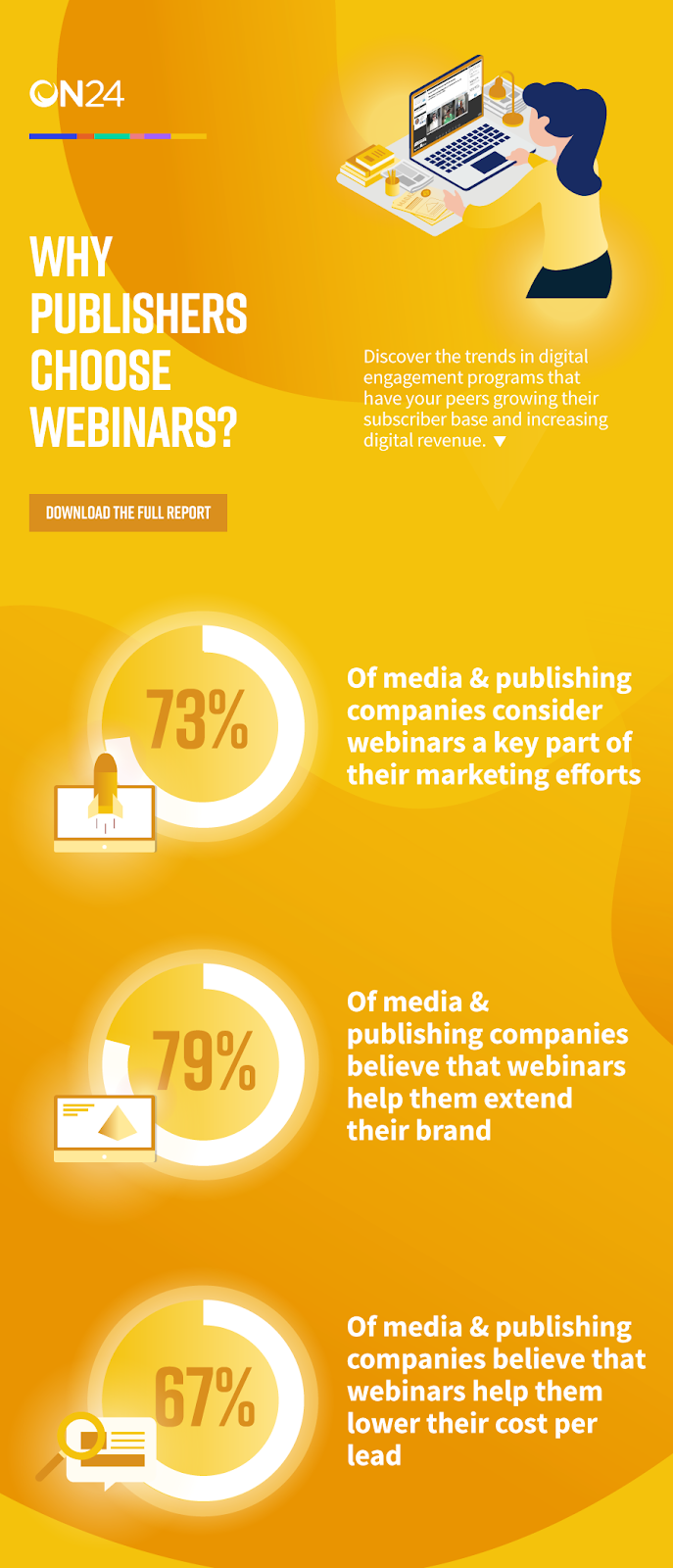Three Ways Media and Publishing Can Adapt to Digital

Few industries have been hit as hard as the media and publishing industry. Newspapers, trade journals, magazines and more have lost circulation or closed. Book publishers battle over ebooks and their distribution rights. Streaming is now standard and Blockbuster, famously, is no more. Most everyone knows what happened: digital technology provided an easier, faster and cheaper medium to relay the same information.
Still, the media and publishing industry lives — even if it has drastically changed from only ten years ago. But how has the industry adapted to today’s digital-first world? Over the past few weeks, we’ve investigated the high-level changes to the industry and surveyed our media and publishing customers for their opinion on the state of the industry. You can find the results of the survey and data on the use of webinars within the industry in our report, “ON24 Webinar Benchmarks Report: Media and Publishing Trends.”
What we found is an industry recovering and growing more resilient to digital changes day by day. Still, there are some key areas of concern — from subscriptions and ads to digital experiences — that the industry needs to figure out if it’s to remain competitive with its digital-native counterparts. Here’s a brief recap of our findings:
The Customer Comes First
Digital audiences have high expectations, especially when it comes to the overall experience of interacting with an outlet. Search and discovery should be simple. Ads should be absent or, if they must be tolerated, unobtrusive. Desktop and mobile sites should provide equally high-quality experiences.
For the media and publishing industry, developing high-quality, seamless experiences is new territory. But establishing a good digital experience is important as consumers and customers flock to outlets that respond to their needs and interests. To make the shift from content and distribution to experience, outlets need to take advantage of what’s immediately available to them: data. By using data, media and publishing companies can sift through interests, better target ads and provide a consumer with the experience he or she desires.
The Subscription/Ad Problem
Many companies in the media and publishing industry made revenue from paid advertisements in their printed materials. But the ad-based revenue model doesn’t translate well to the digital world. The cost of advertising online is much, much lower for one. Ad buyers, for another, have a cost-effective — and data-rich — alternative with auction-based media buying outlets. Finally, consumers can, easily and cheaply, find the information they’re looking for without paying for an outlet.
As a way of staunching the bleeding, some media outlets have turned to subscription-based models. These models offer consumers the opportunity to pay a flat fee for an ad-free experience. While this is a popular option among consumers, industry analysts suggest subscriptions are not sustainable in the long run and that a blended model — one with subscriptions and ads could likely succeed if the company extends a customer-first approach to ads.
Bringing a Seamless Experience Together
The media and publishing industry has a twofold task to remain competitive in a digital age. First, it needs to provide consumers with the content they want when they want it. Second, the industry needs to provide a unified, seamless experience that anticipates the consumer’s needs. To do this, industry organizations will need to focus on customer experience and how customers interact with both content and advertisements.
For media outlets and publishers, focusing on customer experience means making ads and content distinct, but seamless. Ads must be relevant to an individual’s interests and non-intrusive. Content needs to be distinct from ads, but of enough caliber to justify both subscribing to an outlet and tolerating ads. Finally, put together, the two elements need to become a part of a brand’s identity — one which puts the consumer’s wants first and adapts to them in an agile fashion.

